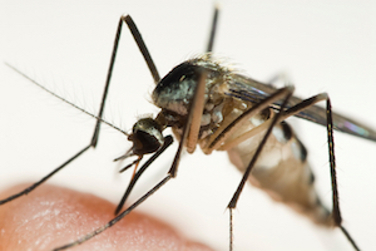Crane Flies Vs. Mosquitoes: What’s the Difference?
You may think you know what that flying creature is, but it can be challenging to know the difference between crane flies and mosquitoes. They have very different impacts on the world around them, so it’s important to be aware of what might be flying around your house.
What is a Crane Fly?
Crane flies, also known as mosquito eaters, are related to other true flies but are from a larger family known as Tipulidae. These long-legged creatures spend their larval life in wet, damp areas. Typically, in the winter months of December and January, crane flies are embedded in lakes, rivers, soil and any area with moisture. Crane flies can live up to three years in the larval stage until temperatures rise in the spring months, welcoming them into the local ecosystem. Areas that experience mild winters are sure to see a surge in adult crane flies during the spring season. These creatures are attracted to light, which is why they can be seen on porches. There is no need to worry if crane flies make it inside your home because they do not bite or cause any harm to humans. Crane flies are actually an important part of your local ecosystem, as they serve as food for birds, bats and frogs.
What is a Mosquito?

These six-legged pests need blood to survive which is why they prey on humans. Typically, in the United States, most bites come from ‘nuisance mosquitoes’ as they typically just leave people with swollen and itchy bites. But with over 3,500 types of mosquitoes in the world, about 200 are in the US and 12 types spread germs, which is why it is important to monitor local mosquito activity. Mosquitoes are vectors, meaning they spread germs to humans that make them sick. Mosquitoes carry diseases including Malaria, Yellow Fever, Dengue, West Nile Virus, and Zika.
What is the Difference Between Crane Flies and Mosquitoes?
Although they look similar, mosquitoes and crane flies are very different. Crane flies are much larger than mosquitoes, which is how they got the reputation that they hunt mosquitoes. This is not completely true. There are some species of crane fly whose larvae feed on the aquatic larvae of mosquitos, but the adults of each species don’t interact with each other, let alone eat each other. While they are smaller in size, mosquitoes are the deadliest animal in the world, and crane flies pose no threat to humans and carry no diseases. Both winged creatures have their own unique appearances, diets, and habits. Read on to learn how to spot the differences so you know when to call a Pro.
Do Crane Flies and Mosquitoes Look the Same?
Because crane flies and mosquitoes look similar but pose much different threats, it is important to be able to tell the difference between the two. Crane flies are generally much larger and have long legs, making them easy to spot. They are tan colored with smooth wings without scales, like the ones mosquitoes carry on their back. Mosquitoes are smaller, about 1/8-3/8” long, and typically grey and black but can contain some white, green and blue markings depending on species.
What do Crane Flies and Mosquitoes Feed from?
Crane flies do not bite or feed on anything in their adult stage, they solely rely on fat reserves from their larval stage as a source of energy. Crane fly adults live short lives, anywhere from a few days to two weeks long, with the sole purpose of reproducing. Female mosquitoes fed off blood in order to lay fertile eggs to reproduce. Male mosquitoes live off nectar.
Mosquito Bites
Many people can experience mosquito bites with little to no symptoms. It is typical to experience itchy, red, swollen welts as a result of a bite. These types of bites do not require medical intervention. Mosquitoes in the U.S. can spread West Nile virus, Eastern equine encephalitis and dengue fever.
How to Get Rid of Mosquitoes
Understanding the differences between a mosquito or crane fly is crucial, especially given the much higher risk that mosquitoes pose. Now that you know these differences, you’ll know what precautions to take and when to call a licensed pest profession to evaluate the situation. Mosquito infestation can be dangerous and so can mosquito bites. Mosquito prevention at home starts with removing standing water on your property. Standing water can be found in flowerpots, pool covers and baby pools. Avoiding the outdoors from dusk to dawn can reduce your chances of mosquito bites as they are most active during that time. It is important to stay up to date with your local government’s mosquito prevention efforts. If you believe your home or property is experiencing a mosquito problem, contact a licensed pest professional.

Learn About Ants
Ants are a common pest homeowners struggle to eradicate. Learn more about them!

Bed Bug Pest Guide
Traveling this summer? Be sure to keep an eye out for bed bugs! Use our Pest Guide to help identify this pest.

NPMA's What Grows There? Project
Check out NPMA's What Grows There? project to learn how pests, such as flies, cockroaches and rodents, can spread germs throughout a home.
Find a PEST PRO in your area

Learn About Ants
Ants are a common pest homeowners struggle to eradicate. Learn more about them!

Bed Bug Pest Guide
Traveling this summer? Be sure to keep an eye out for bed bugs! Use our Pest Guide to help identify this pest.

NPMA's What Grows There? Project
Check out NPMA's What Grows There? project to learn how pests, such as flies, cockroaches and rodents, can spread germs throughout a home.
